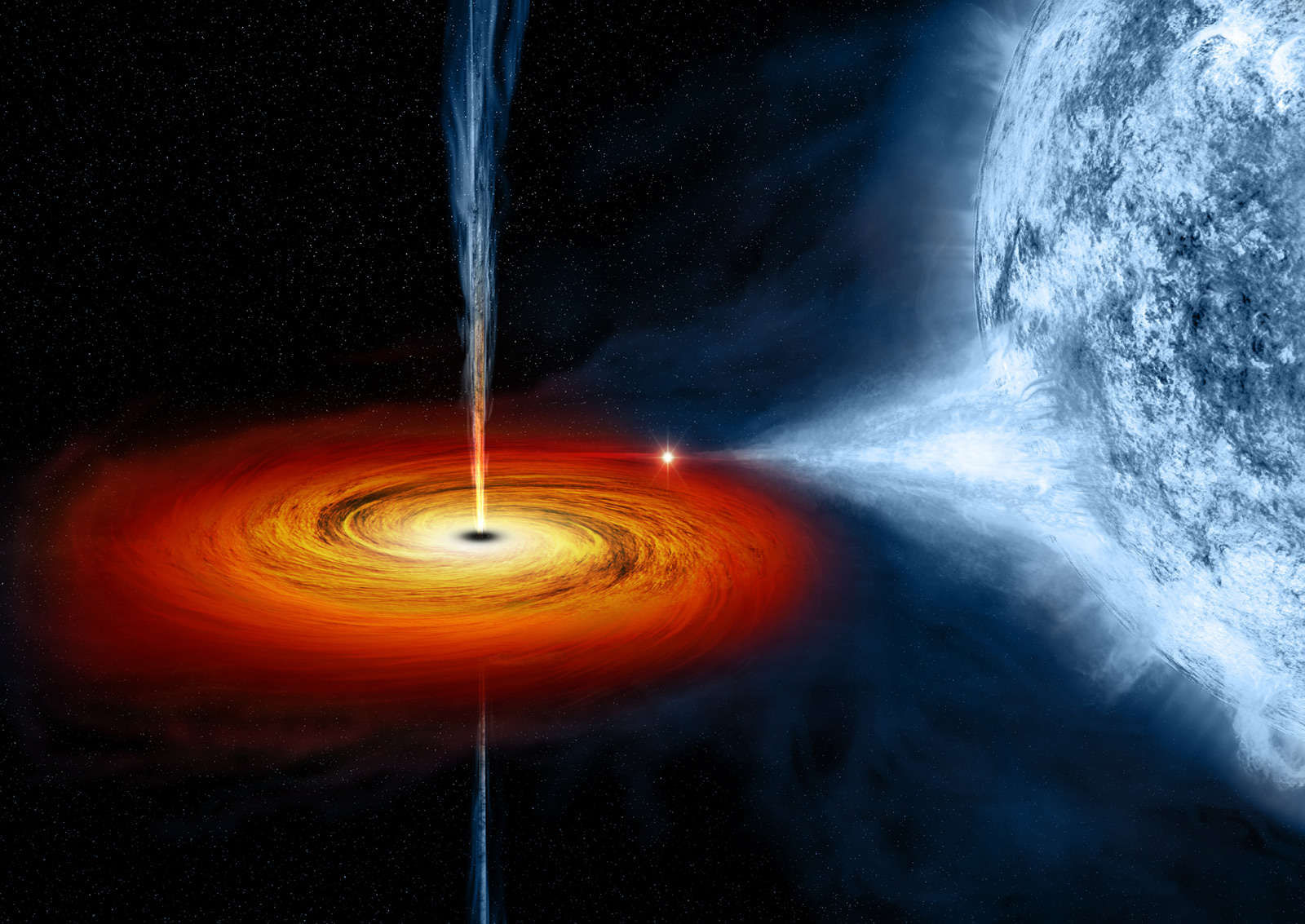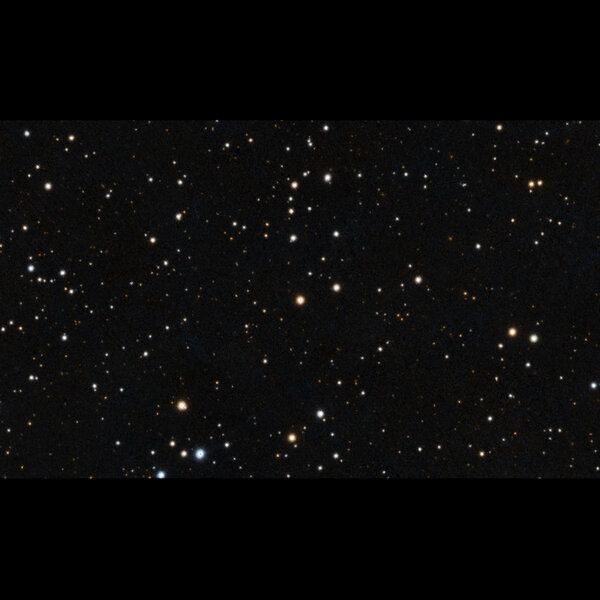A black hole may be munching on the dying body of a star
An undersized red giant may have a dark companion.

Astronomers have found an odd star, with behavior that suggests it may have a dark companion: Either a very massive neutron star, or a very low-mass black hole.
The star is called 2M04123153+6738486 — actually a catalog name, a combination of the 2MASS survey name and its sky coordinates, so let’s call it 2M04123 for short. It’s decently far from Earth, roughly 13,000 light-years away in the constellation of Camelopardalis, and faint, far too dim to be seen with the unaided eye.
A spectrum of the star reveals it to be a red giant, a star that was once much like the Sun but has since run out of hydrogen fuel in its core to fuse into helium. When this happens the star swells up hugely and cools off, hence the term red giant. It’s glowing about 230 times as brightly as the Sun, which is actually somewhat underluminous for such a star.
Which is a red flag already that something odd is up. If you assume it’s a single star just all by its lonesome, its mass is just a bit more than the Sun’s, but its radius is only about 30 times bigger. A typical red giant is much larger, over a hundred times the size of the Sun. It’s possible that 2M04123 lost a lot of mass during its red giant phase, literally blowing it away as a stream of subatomic particles over millions of years, and that’s why it’s smaller. But there’s another explanation that makes more sense…
Observations by several different observatories over time reveal 2M04123 to be a variable star, meaning it changes brightness, and it does so in a fairly regular, periodic way [link to paper]. The light curve — a plot of brightness over time — indicates it’s not a normal star, though: The shape of the graph shows that the star isn’t a sphere, but an ellipsoid, like an egg. That’s actually why it’s a variable star! When we see it broadside it looks brighter because we see more of it; when we see it end-on it looks dimmer.
Getting a star into this shape is essentially impossible unless there’s something else there pulling on it. Given the 81-day period of the brightness variations, it’s logical to conclude there’s another object there with a lot of mass. They orbit each other every 81 days, and the gravity of the second object is what’s distorting 2M04123’s shape.
So what is this other object? Using various physical models to characterize the orbit, the astronomers find that the companion is something like two to three times the mass of the Sun. Interestingly, one thing that pops out of the equations is the ratio of the mass of the companion to that of the red giant, and that winds up being about 5, meaning it’s five times more massive than 2M04123. That means the red giant is less massive than first thought, more like 0.6 times the Sun’s mass.
That also explains the relatively small size of the star, too. If a star becomes a red giant while it’s orbiting another star, the second star can draw matter off it, siphoning it off. It gains mass while the red giant loses it. In fact the red giant can only get so big before it loses material to the other star, and can’t get bigger. That’s why it’s smaller than usual for such a star.
This is where it gets interesting. If the second star were a normal star like the Sun, it would have to be less than about 1.3 times the Sun’s mass or else its light would show up in the observations. If it too is a dying star it could be as massive as 1.7 times the Sun, but even that is too small to explain the orbit.
There are only two types of objects that can have that much mass but give off little or no light: a neutron star and a black hole.
Both are created when a massive star goes supernova. The core collapses, and becomes very dense. If it has up to about 2.8 times the Sun’s mass it will become a neutron star, and if it has more it collapses all the way down to a black hole. The calculated companion mass of 2 – 3 times the Sun’s mass covers both possibilities, and it’s not possible to distinguish them as yet.
I’ll be honest and say I was skeptical reading this, because a lot of these calculations ride pretty hard on the distance determination; that affects the luminosity, mass, and radius calculations, as well as the math for the mass of the companion. In fact, a lot of recent black hole “discoveries” have been rebuked — one astronomer, named Kareem el-Badry, has done a lot of that work in that area, so much so he even jokingly put up an April Fool’s tweet about it. So is this really a compact dark companion?
The astronomers pulled out more evidence. They find that there is some visible evidence of a second object in the form of glowing hydrogen gas. This is very typical for what’s called an accretion disk, a flat disk of material whirling around a neutron star or black hole. They also find the disk, if that’s what it is, may be absorbing some of the light from the red giant every time it passes between us and it, creating a weird kind of eclipse. I wouldn’t say this clinches the case, but it’s difficult to explain otherwise.
So I’m marking this one as “hey this is very cool and possibly evidence of a black hole or neutron star in orbit around a used-to-be-normal star but let’s not be too sure until we get better evidence especially for its distance” (it’s a sparsely populated category). We really don’t have a lot of evidence for systems like this, so every one that’s found is important. I hope this one pans out.





























